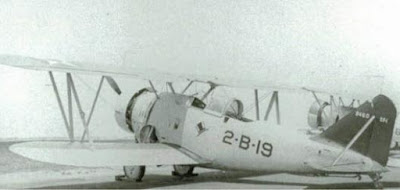The Grumman SF-1 was an American scout biplane used by the US Navy in the 1930s. It was based on the FF-1 fighter airframe. The prototype had been designated XSF-1 and it first flew on August 20, 1932. After several test trials at Naval Air Station Anacostia, the US Navy ordered 34 SF-1s, which were delivered for service between February 15 and July 12, 1934.
Technical Characteristics
The Grumman SF-1 was a two-seat, single-engine biplane. Its fuselage was of all-metal semi-monocoque construction. Its wings were made of aluminum, covered with fabric. Meanwhile, the horizontal tail surfaces and all control surfaces were also all-metal. The external aileron mass balances of the Grumman FF-1 were removed on the SF-1. Landing gear (the front wheels) were retractable.
The SF-1 was powered by one Wright R-1820-78 Cyclone, air-cooled, radial engine, which could put out 750 HP. The engine was enclosed in a Townend ring cowling, which was similar to the one installed on the FF-1. This powerplant had individual exhaust stacks for each cylinder.
Below, three SF-1 aircraft flying in echelon formation in Oakland, California, in 1937.
The same scout biplane parked at a US Navy airbase in 1936.




